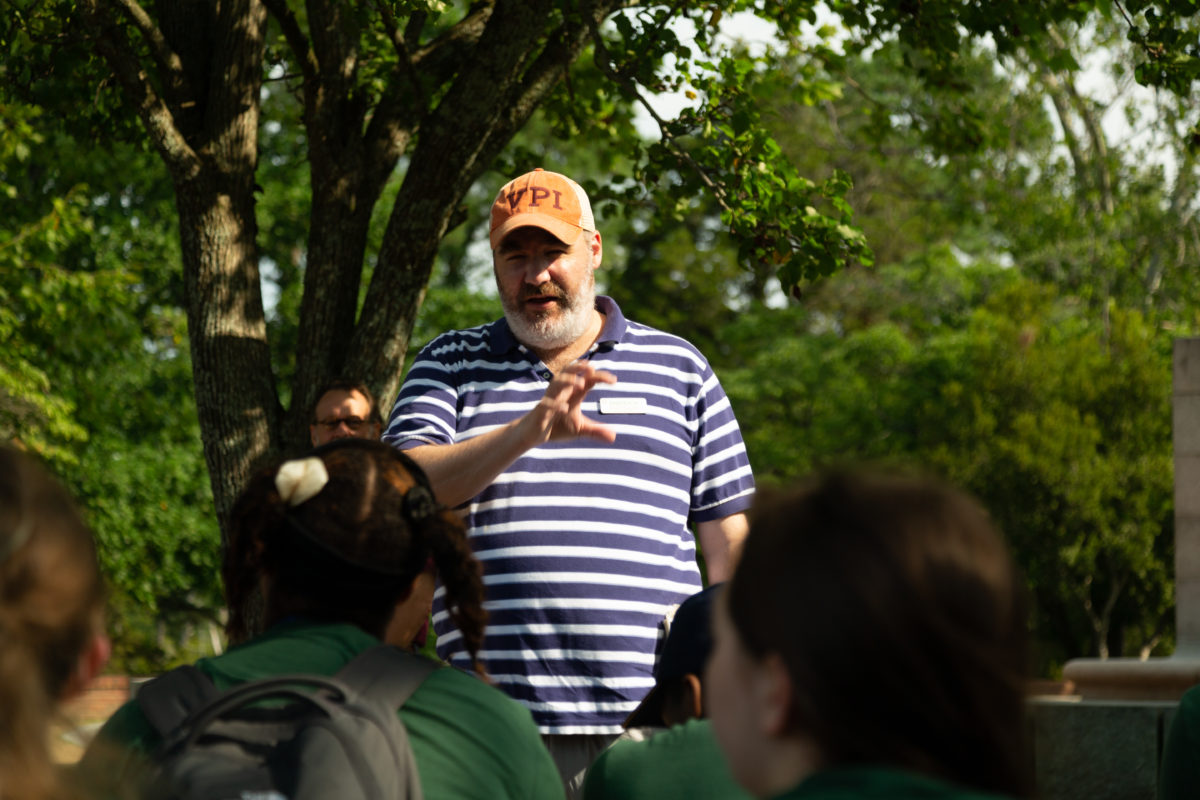Jamestowne is one of those sites that captures people’s imaginations. For decades, the first successful English colony in North America had been either heavily romanticised or downright despised depending on who you’re asking. However, the real history of Jamestowne is significantly more nuanced. Enter Mark Summers, the Educational Director of Youth and Public Programmes for Jamestowne Rediscovery. Summers’s job entails pulling people from the aforementioned narratives and then guiding them through a more accurate depiction of what life in the colony was really like. This was why the National History Academy (NHA) visited Summers at Jamestowne on July 21st to hear him speak about the many varied threads which weave together to form the Jamestowne’s full narrative.
Summers started his talk with NHA students by examining both the advantages and disadvantages that Jamestowne’s location had to offer. He started by talking about some of the more familiar aspects of the colony’s story, which primarily consisted of the colony’s many pitfalls. This most notably included the site’s sandy soil, which was proved to be completely unsuitable both for agriculture and for building structures on. Whilst this seemed to confirm the Virginia Company’s complete inadequacy in choosing an appropriate place to start a colony, Summers also did not shy away from pointing out many of the benefits that the location chosen had. These mainly had to do with defence advantages, namely that the high ground would prevent attacks from the local Native American tribes, and the location along the James River would prevent the colony from being spotted by the Spanish Armada. Of course, in a bitter twist of irony, Summers then tentatively revealed a contemporary Spanish map from Madrid, indicating that the Spaniards had known about the colony since its inception thus rendering one of the key reasons for choosing the location we know as Jamestowne today, useless.
Whilst the Virginia Company’s curious selection of the current location certainly formed a large part of the conversation with Summers, focus soon shifted to how generation of wealth occurred in the settlement. Summers started this session of the talk by telling students to disregard the blatant impressions in the media of the “brave English” who by the “boldness of their own hands, had established the town by themselves”. Yet, as NHA students were about to learn, this was completely false. This was because Jamestowne was not built solely by white English hands, but by the brown hands and broad backs of slaves from Africa. To give the students a closer connection to those who were forcibly sent to Jamestowne, Summers focused on a young woman named Angela who originally was from modern-day Angola. Much like a majority of enslaved Africans in the Americas, her story would be one of great tragedy. Using historical records, Summers, through Jamestowne Rediscovery, was able to trace her journey across the Atlantic on an English pirate ship bound for the New World which curiously sailed under a Dutch flag of convenience. Once she arrived, records suggested that she was immediately sold and forced to work on a fig plantation owned by one of the Settlement’s wealthiest families. Whilst Angela’s arrival in 1619 would be the first, it would not be the last. Over 30 more slaves would end up in the newly found colony, and they would stay there until a revolt would occur, just a few yards away from the dock where Angela first stepped foot in Jamestowne, ending the tyrannical practice in the settlement. Whilst the story of Angela was most certainly sobering, the histories of people like Angela are crucial because they challenge the perception many Americans have about who really built the legacy of the first successful British colony in North America.
